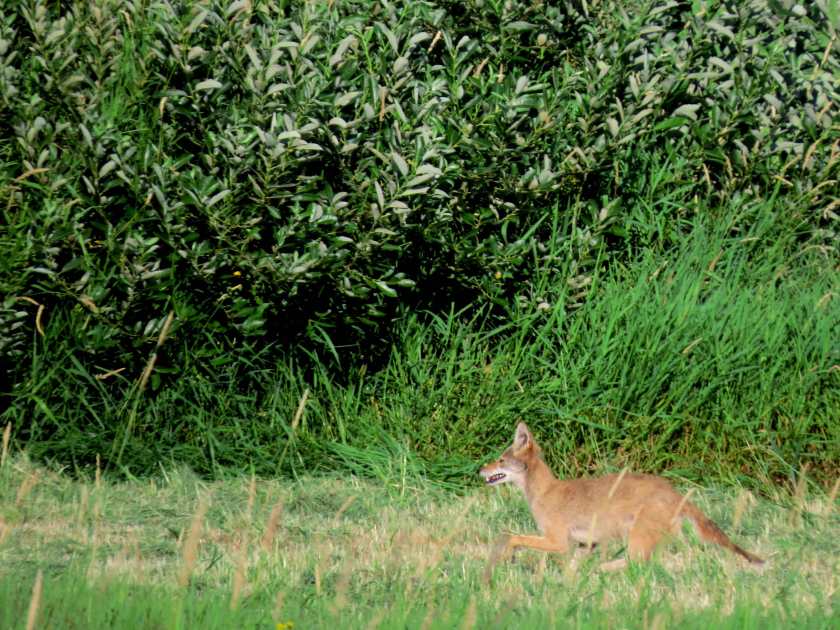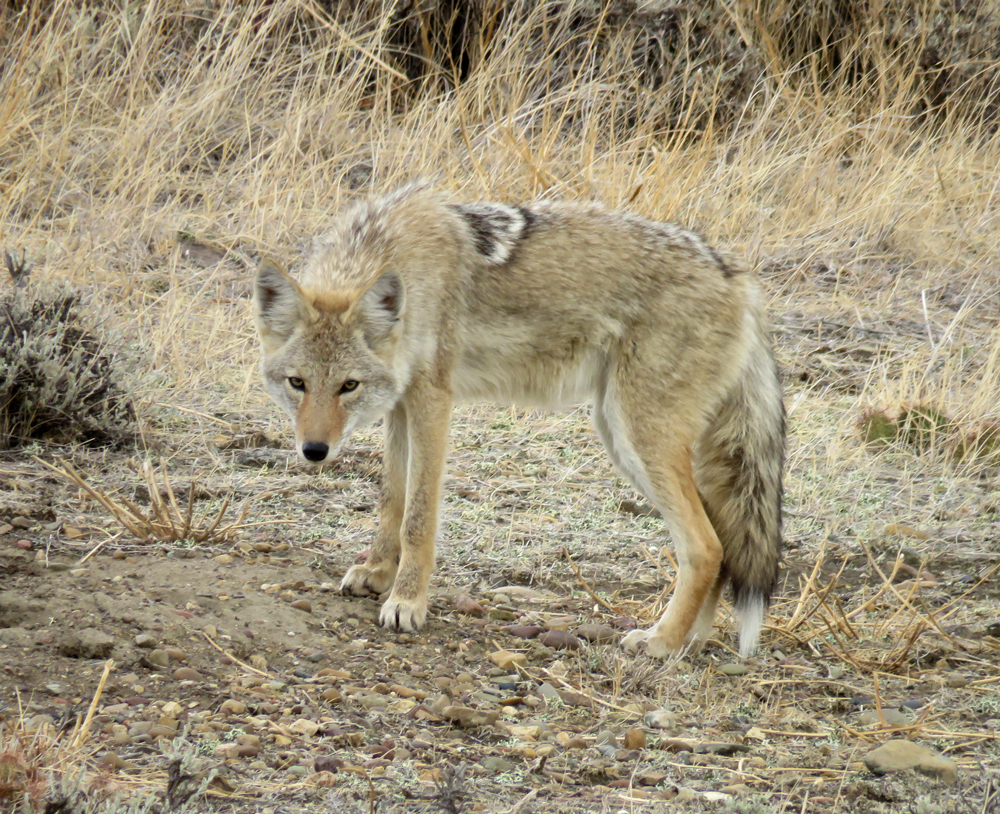We often think of humans as the eternal enemy of all wildlife. It’s natural to go there. Right now, we are causing the biggest mass extinction since the meteorite that tipped the dominoes, ultimately killing the dinosaurs and letting mammals prevail.
But some wildlife adapts to us and our behavior. A contractor on one of my projects says that gunfire is a dinner bell for grizzlies in Wyoming. The bears learn to associate shots with gut piles left behind by hunters field dressing game. This has caused bear-human conflict when the grizzly doesn’t wait for the hunter to finish processing game.

I see wildlife adaptability every time I rent a tractor and mow my fields. I’m renting because it’s cheaper than owning for the amount I mow, and I don’t want to get stuck hauling out a tractor if it floods. I rent just often enough to be cost-effective and to keep the grass from becoming too long to tackle. In between mowings, it grows thigh-high and shelters a population of rodents and insects.

Many raptors follow my tractor, for good reason. The rumbling and vibration of the machinery sends mice and voles fleeing through the grass, where they become easy prey. Those that don’t survive become dinner for scavengers.


Coyotes also figured out how to work around and with humans and our machinery. Canis latrans follows humans where ever we go, living off our leavings. They pursue our scraps and the animals atracted to our waste and the table we set for birds and pets. Coyotes have walked in our wagon tracks and footsteps, across trails and highways, to occupy North and Central America. As we exterminated their enemies, especially wolves, their populations grew and their territory expanded. They grew bolder.
Coyotes evolved away from the jackal lineage about 800,000 years ago. Today, they live across the continent, and not just in rural landscapes. They defy our attempts to exterminate them. They prowl cities and business parks. They have been sighted in New York’s Central Park. They aren’t picky eaters: insects, fruit, garbage, rodents, anything they can find. They may offer free rat control in large cities.
If you are on Nextdoor in my area, or walking our roads, you will see lots of “lost cat” notices. Outdoor cats in our area can fall victim to eagles, dogs, and coyotes; unlike the first two predators, coyotes rarely leave a trace behind.

Despite the fact that the U.S. government and property owners annihilate a half million of them a year, they are not at risk of extinction. They have figured us out.

After grey wolves were re-introduced in Yellowstone National Park, coyote populations dropped by half. They abandoned the apex predator behavior they developed when wolves were absent. Sure, they might sneak a bite of a wolf or grizzly dinner, but they know to hightail it when the owner takes notice.

My corner of the Snohomish River Valley had a stable coyote pack for a long time. They would yip and howl in winter far back in the fields. I would see them occasionally. Once in awhile, they would nab something from my yard at night and launch a raucous coyote party.

Then my hobby-farmer neighbor turned sheep out on his land without adequate protection from predators. His lambs got nabbed by coyotes, but instead of enclosing them, he went on a rampage after the coyotes with a gun the law says he couldn’t own.
He eventually gave up on the sheep like he gave up on everything. He killed the goats. A local butcher field dressed most of the pigs one day as I was driving home from work. the chickens vanished, most likely killed by eagles. Weeds have taken over and the few remaining animals roam unmanaged. They would be everywhere if he had not installed mesh fencing. Animal Services forced him to downsize and confine wayward cows that triggered too many complaints of property damage.

A year after the revenge killings for lamb nabbing, the rabbit population exploded. Rabbits frolicked in my driveway and destroyed my garden and landscaping. The coyote pack was gone, and the few animals around couldn’t navigate the mesh maze my neighbor installed.

Hope returned in June 2016, in the form of scat with cherries and occasional hair on the road and in my horses’ paddocks. I finally caught sight of a young coyote as I was mowing thigh high grass.

- This young pup is on her own early. In the morning, she would flee when she saw me.
At first wary, this young coyote figured out after several hours that the tractor meant food, and by evening was following at a safe distance. I can’t imagine how the scrawny little thing stuffed so many rodents down her gullet. She was still at it after the tractor got turned off at sunset, stalking the grass for confused voles.




Most coyotes aren’t brave enough to follow the tractor like that, but they quickly learn that the sound means easy food, like the sound of gunfire to grizzlies. Every time I mow, they show up sooner or later. This year as usual, a young coyote showed up after a day of mowing to work the fields for voles exposed by the short grass.

The coyote was young, and very wary; the tractor was fine just as long as it didn’t stop. I wasn’t going to interfere with its job. Coyotes are here out West because they adapted to us and our ways. They thrive because we removed their enemies and we waste so much. These coyotes, like their ancestors, have learned to maneuver around us in the shadows, to use our paths and roads, to live on our leavings.

For more information on coyotes, read Dan Flores’ Coyote America: A Natural and Supernatural History, Basic Books. This National Geographic article features history, statistics, and an interview with Dan.


